A Scratching Post for Bobcats
An Excerpt from "Four Miles West of Nowhere"
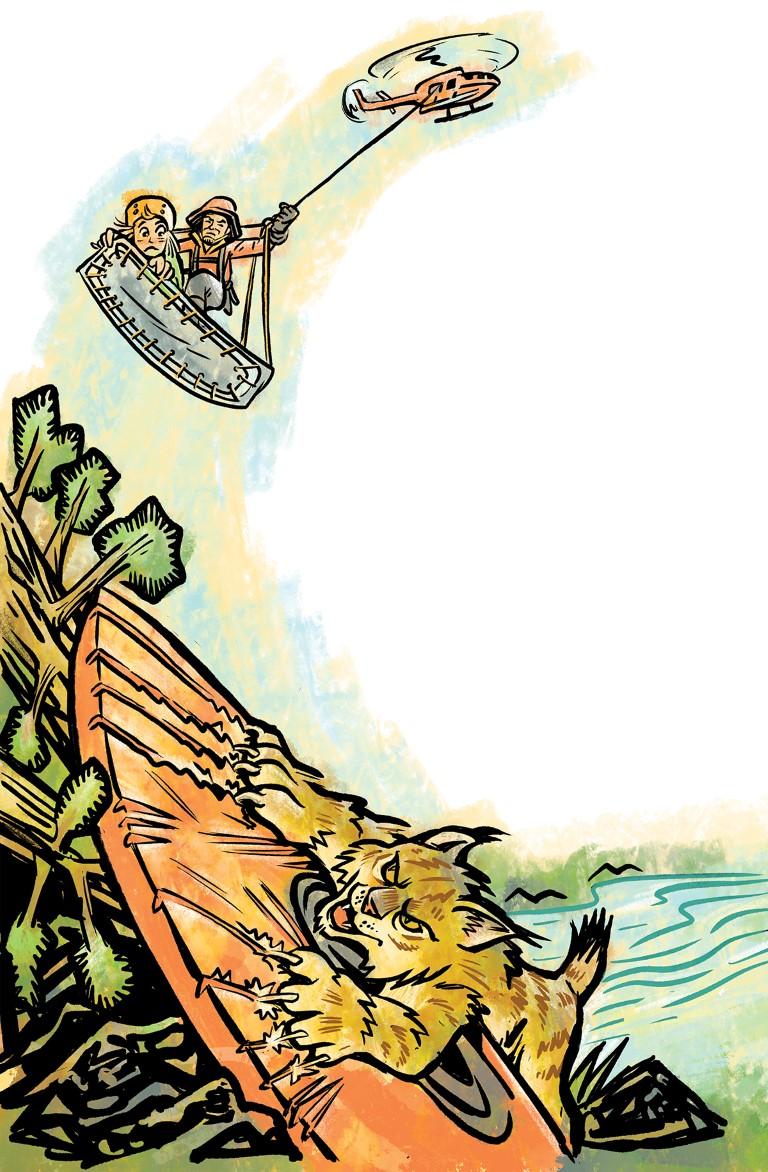
Graphic by Rob Rath
As the last of the snow was melting, six men hunting wolves drove their Chevrolet Suburban off the two-track that leads to our favorite campground, called Paradise, which right then wasn’t. Their truck flipped after colliding with a mini avalanche—that’s what the tire tracks indicated—then splashed into the Selway River, which was running at about nine feet of flabbergasting flood stage. Four of the six men were swept like worms over Rainbow Falls. Only a boot was found. The river was whooshing along so alarmingly that the would-be rescuers couldn’t retrieve the Suburban for two days, even though it sat six feet from shore. It took the sheriff seven hours merely to arrive at the scene; the site is but 20 miles west of my home, yet to drive there is usually a two-and-a-half-hour jaunt, except when there’s snow, which there was. Nor could rescuers cross the river to search the far side for corpses. So two helicopters were summoned, as were cadaver dogs and at least a dozen rescue specialists.
Their search meant standing on the riverbank, kicking dirt, and wondering how many miles the bodies had already traveled. The sheriff mentioned that the missing men would have to decompose until their chest cavities filled with gas, then they’d float and maybe summertime rafters would find a quartet of grisly carcasses that spoiled their vacations but supplied a vivid tale for a lifetime. But the sheriff doubted even that would happen. He reckoned the bodies were permanently trapped underwater against logjams—“postage-stamped” is the term used here—and that there’d never be anything of substance to ship home for burial. Forgive me if this is indelicate, but brown trout are carnivorous. Brown trout eat other brown trout. Also mice. Also anything that wiggles, including fish being retrieved by an Orvis rod. Little freshwater sharks is what they are.
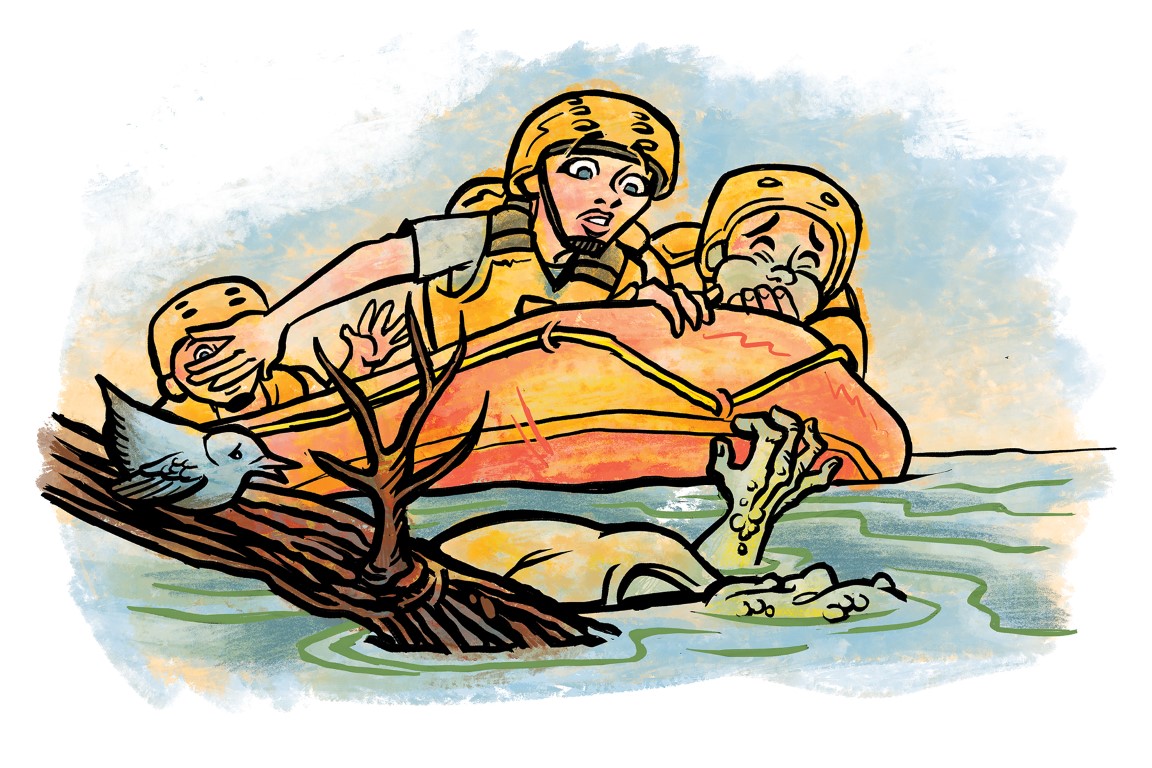
The search-and-rescue vets loitered at the scene for two days, then drove home. The New York relatives of two of the victims were indignant that officials had so blithely thrown in a wet towel.
The sheriff tried to explain that this wasn’t a burbling stream meandering through Central Park, that it was “as remote as Siberia.” The relatives nonetheless demanded that grappling hooks be thrown. The sheriff patiently informed that hooks might never even hit the bottom, given the hellish current, and might instead pull the thrower to his grave. One month later, a lone victim was found. He was 43 miles downstream.
...I came to realize that Darbrarians accept outdoors mayhem with equanimity, and it induced me to drive 25 miles to Hamilton, our county seat, to talk to the Ravalli County Search & Rescue team.
Turns out that a gentleman had recently driven his vehicle off the curlicued Skalkaho Pass to descend—far from intentionally—600 feet to a rocky conclusion.
“When we arrived, the guy’s car was pancaked,” said Burleigh Curtis, president of Ravalli County Search & Rescue. “A lot of ropes, carabiners, clips, and rappelling was involved. When we winched down, the guy was like, ‘Hey, glad to see you, dude. What took so long?’ He wanted breakfast. I began laughing. It was a lesson about assuming a guy is dead. Then he isn’t.”
Burleigh is 69. He is compact, sturdy, wears wire-rim glasses, and chews on toothpicks. His military-cut brown-and-gray hair makes him look like your last phys-ed teacher. He’s been rescuing inattentive valley adventurers for 22 years in the kind of wilderness that might forgive a mistake but usually portends a memorial.
“Our most dangerous rescues are in fast-moving water,” he told me. “We look for an eddy to form upstream of the stranded car or boat. You can’t do anything from below, because the vehicle is too likely to drift down on you. But an eddy in front, we can dive on that.”
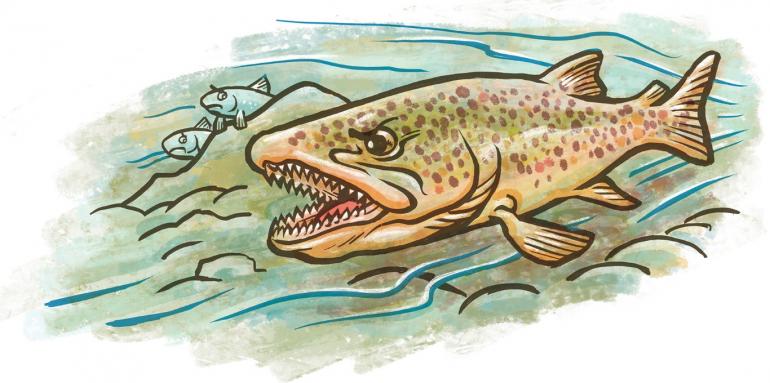
Graphic by Rob Rath
Every year, Burleigh rescues five or six motorists who’ve driven into our otherwise picturesque Bitterroot River. He never inquires as to their method of entry, which mystifies me. It’s like not asking what Sean Penn ate during lunch with El Chapo.
Ravalli County Search & Rescue comprises 25 burly Burleighs, specialists in mountaineering, orienteering, swift-water recovery, scuba diving, helicopter basket lifts, scent-dog training, off-road driving, CPR, and interrogation. The latter comes into play because the initial 911 call is often vague.
“Ninety-nine percent of our calls are from friends or relatives, not the subject,” Burleigh explained, steadfastly avoiding the term victim. “For instance, a wife will say, ‘My husband left and never came back.’ I have to question her, attaching a numerical estimate to her responses, then the resulting score tells me the urgency. Does the subject have a medical history? Does he have overnight gear? Has he come back late in the past? Does he know the territory? And then the first thing we do is scramble one of our Jeeps to the trail head to see if the subject’s car is even parked there. We look for cigarette butts, tire tracks, litter. One time we found no car at all, because the guy was in Salt Lake City with his girlfriend.”
To qualify as a rescuer, applicants must be county residents, CPR-validated, and guilty of no felonies. Or not too many. There’s plenty of staff turnover.
“People think it’ll be a romantic experience full of John Wayne heroics,” Burleigh said. “But when you’re standing wet and shivering on a riverbank for nine hours, poking around for a bloated corpse, the fun wears right off.”
 Burleigh’s motorized arsenal is reassuring: a Jeep Wrangler with Yeti-approved snow tires; a truck carrying an ice raft; a 4WD Knapheide ambulance that seats five rescuers plus a patient strapped onto a titanium litter so light it can easily be carried on a backpack; four Yamaha snowmobiles (one with a shielded sled for the victim); four Polaris ATVs, six Zodiac rafts, and a 4WD six-wheeled command center that looks like a Compton SWAT post. It cost $160,000 and carries a further $4,000 worth of radios attached to telescoping antennae. Inside are sofas flanking a table that accommodates any of a zillion topo maps stored in a wine rack with no corkscrew. The cadaver dogs reportedly love the RV’s sofas.
Burleigh’s motorized arsenal is reassuring: a Jeep Wrangler with Yeti-approved snow tires; a truck carrying an ice raft; a 4WD Knapheide ambulance that seats five rescuers plus a patient strapped onto a titanium litter so light it can easily be carried on a backpack; four Yamaha snowmobiles (one with a shielded sled for the victim); four Polaris ATVs, six Zodiac rafts, and a 4WD six-wheeled command center that looks like a Compton SWAT post. It cost $160,000 and carries a further $4,000 worth of radios attached to telescoping antennae. Inside are sofas flanking a table that accommodates any of a zillion topo maps stored in a wine rack with no corkscrew. The cadaver dogs reportedly love the RV’s sofas.
“Despite all the vehicles,” Burleigh told me, “I can tell you that the principal method of transportation is always…” and then he points at his legs. He has a blown-out knee to prove it.
At headquarters, there’s a small interrogation room where friends and family huddle. They’re kept isolated from what might be morbid radio transmissions. Burleigh never tells them he’s calling off the search. Instead, he says, “We need more information.” When confirmation of a subject’s death arrives, the family is usually watching TV.
The sea change in S&R has been cell phones, although most don’t work in the backcountry near my home. You may as well throw your phone in the river and hope Flipper finds it.
“We had a guy call on his cell, saying he was lost,” Burleigh recalled. “We pinged his location—latitude and longitude—and talked him through orienting his compass. Then we just ‘walked’ him back. Our last instruction was, ‘Uh, you should see your truck ‘bout now,’ and the guy goes, ‘Oh, yeah, jeez, it’s right in front of me.’ ”
Ravalli County S&R won’t respond to folks who’ve drained their car’s battery or drowned its electrics.
“We need some evidence you’re in a life-threatening situation,” Burleigh explained, “not just a matter of convenience to be extracted. We’re not mechanics. If you have food and water, you may be stuck for a couple days.”
Neither will they salvage your car or gear. They’ll hoist you to safety, but your kayak becomes a scratching post for bobcats.
Burleigh recalled a hiker who panicked after noticing that a creek he crossed was rising with speed sufficient to block retreat. “The next day, we flew the helo in,” Burleigh remembered, “winched down our rescue guy, and two of the campers said, ‘Hey, we’re fine, don’t need no help.’ But the third guy was freaked and cold. So we hoisted him to the helo and flew him to the trailhead. That’s when he complained we’d left behind his backpack.” Burleigh says more and more campers equip themselves with GPS, emboldening them to deeper wilderness havoc. “And they always forget spare batteries,” he added.
Burleigh’s most memorable rescue was on Darby’s own stretch of the Bitterroot River, my favorite site for brown trout.
“A canoe slammed up against a log and got stuck,” he recalled. “The guy scrambled to safety, but the woman was pinned, with her head barely above water. A diver tied a rope to her—a live-bait vest [so-called because it’s a line with something squirming on the end]. Meanwhile, the diver had reached the canoe and was attempting to cut it in half with a chain saw. Yeah, I know, crazy. Suddenly, the girl was pulled under, so the diver dove after her. Grabbed her and held on underwater for 50 meters, on one breath. The rescuer earned a medal of valor for that. But, I swear, I’m surprised I didn’t witness four drownings.”
I interviewed Burleigh immediately after an early June snowstorm at our house. I told him that Julie and I were momentarily embarking on a tour in Car and Driver’s rear-wheel-drive, 365-hp Genesis G90 with summer tires. Our goal was to traverse Montana’s Beartooth Highway, a road that achieves 11,000 feet. Burleigh stared at me, then said, “Wow. Okay. Guess I’ll see you later.”
I smiled. Burleigh did not.

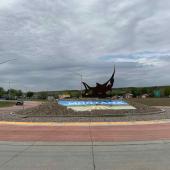
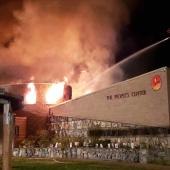






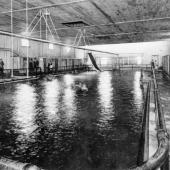
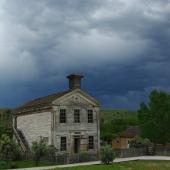
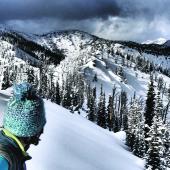
- Reply
Permalink